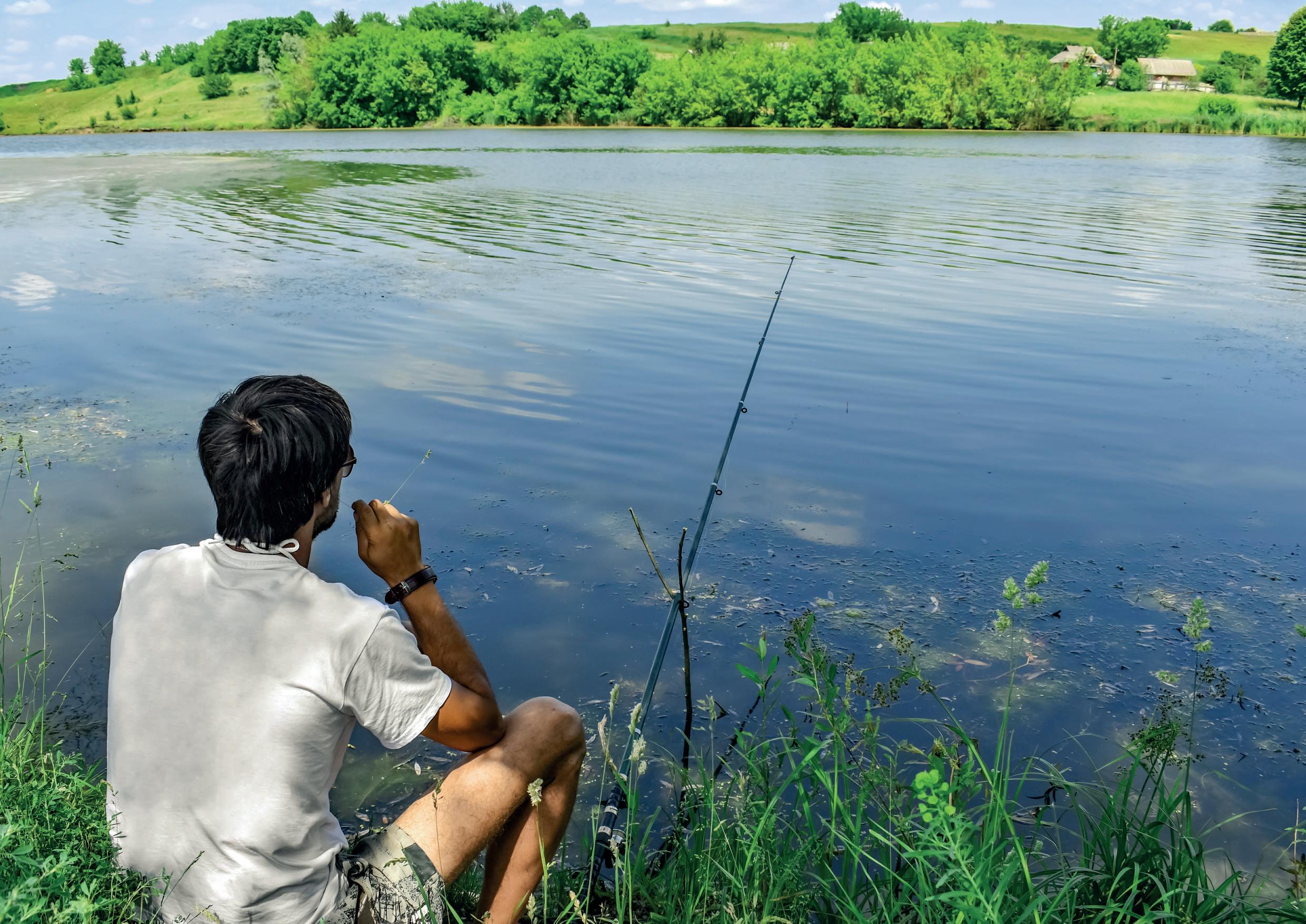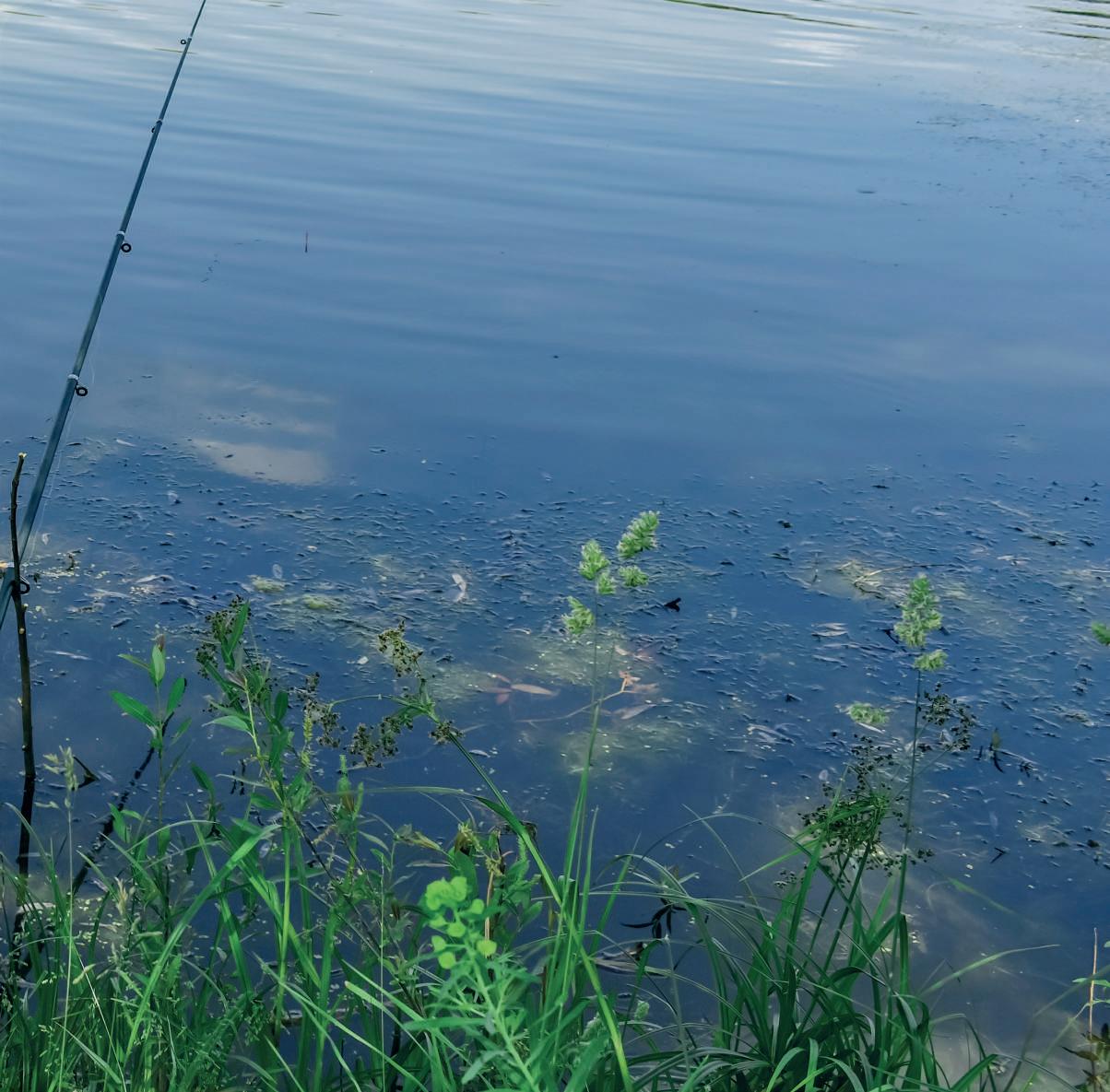
5 minute read
Fishing
fishing The End of Summer
SEPTEMBER FOR ME MARKS THE END OF THE PEAK OF WATER TEMPERATURES.
Advertisement
By Clive Kenyon
For the last two months some fish will have been struggling with hypoxia or oxygen starvation caused when water temperatures become too high to sustain dissolved oxygen. Cooler winds will help our cause and revive the appetites of those fish who like some of us, prefer not to be too hot. This time also marks the exodus of the holiday makers although this year has been abnormal compared to the usual trends. The number of anglers will certainly decline by mid-month and some of our beautiful venues will return to their more tranquil state. In July, August and early September I tend to look for those forgotten places that remain quiet through the summer. Small rivers are often great places to fish in summer months as the numerous weirs and gravelled shallows maintain oxygen levels and bank side trees provide welcome shade. This is also the last month that we can fish some of our smaller Category 1 waters until the trout season re-opens on the second Saturday in March.
Fish Finders
I have touched on this subject before outlining traditional methods of water craft to locate where the better places to fish are. Fish tend to inhabit locations that give them security, food and comfort and there are often long stretches of lake and river banks that are devoid of fish because the above criteria are not met. Conversely you can sometimes find fish crammed close together in an otherwise barren stretch and the reason for this is not evident from our bankside locations. Over the years I have found benefits in plumbing likely swims to check the depths, type of bottom and in rivers, the flow. These days it is far easier and much more accurate to use one of the electronic sonar options to survey the places of interest in rivers and lakes. There are basically three types of device: a boat mounted sonar which can be temporarily or permanently attached to the boat; a smaller sonar that can be cast using a heavy rod; and a hybrid unit that can be are located for no reasons obvious from used for both purposes and links to a the bank. Not all fish holding swims are computer program that maps the contours classical ones as portrayed by Bernard of the bottom for you. Venables. These units are usually referred The least expensive is the type that you can cast out and retrieve, viewing the information the sonar sends to a small LCD screen on a hand-held receiver. These start at around €40 and are surprisingly good. Certainly a lot more accurate and less fiddly than the old rod, plummet and notebook method. to as Fish Finders yet that particular aspect is probably the least useful for our purposes. It is common for fish to be graded in three sizes; large, medium or small. Imagine trying to fix those distinctions to species as varying as bleak and wels catfish. The sonar unit also transmits pulses that can in some cases record the same fish multiple times as it A boat mounted sonar will set you back slowly drifts over the surface. It is possible upwards of €100 for the most basic type. with the more sophisticated types to Again, the sonar imagery is displayed on a adjust the settings to give a better idea of dedicated LCD screen, larger than the what is lurking below, and with a bit of hand-held receiver and both types have a experience you will be able to identify that modicum of adjustment to enable you to the large fish showing at 1.7 metres in a 2 tune out clutter and tune in on features metre depth isn’t cruising just off the such as weed beds and sunken branches. bottom, but 1.8m is where the top of its The most interesting type is the one that back is. Its mouth might be right on the transmits its data to your mobile phone bottom seeking out food, and the three via its own Wi-Fi hot spot. The sonar is fish icons showing on your display are cast out and retrieved or fastened to the actually the same fish being recorded by transom of your boat and the data is three pulses sent out by the sonar. Just recorded on an App like using a lead that you load onto plummet to your smartphone. The sonar unit also transmits discover whether Once the survey is pulses that can in some cases the bottom is hard completed you can upload the data to a web program that record the same fish multiple times as it slowly drifts over the surface gravel or soft mud it takes experience to interpret the gives more detail findings. than can be viewed on your phone, and Armed with such a device it is possible to can be printed or shared with others. identify fishy looking places much more These obviously are more expensive than quickly than when using a conventional the other types and it must be said are not perfect. The maps do not always align and you can find your chosen swim overlaid onto dry land. However, with a bit of intelligent interpretation and the use of other resources such as a camera, compass and written notes you can quickly build up an accurate and very useful map of the lake or river bed and have sightlines and distances recorded to enable you to cast to the fish holding features. float and lead plummet and this is enhanced by your water craft, not a replacement for it. You will still need to interpret the data received and apply that to weather conditions, time of year and other factors. The surface water temperature recorded may not correspond to the water temperature on the bottom. But a wise angler knows that this warm surface water can find its way to the bottom layer on the lee shore or The beauty of using sonars is that you can immediately after a weir. Knowledge is rule out places that are snag pits before power and these type of devices add to losing fish or tackle to those snags, and your knowledge and can increase your rate you regularly discover places where fish of success.












